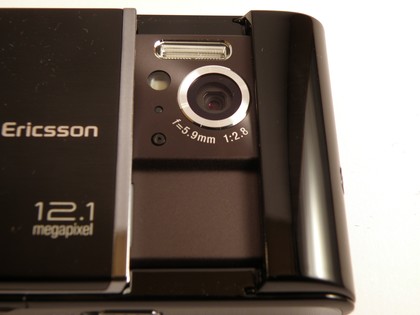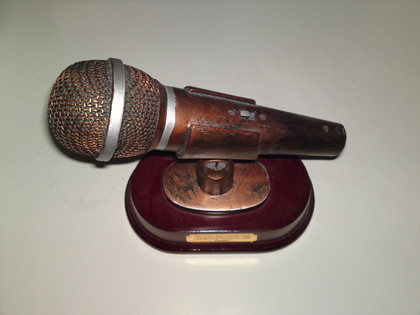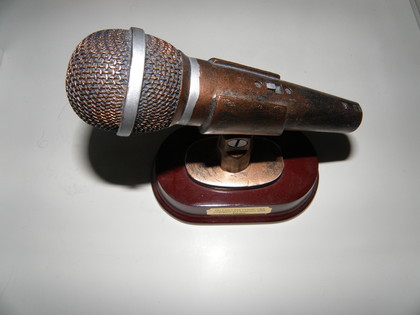Why you can trust TechRadar
This is the bit we've been really excited to talk about – and for good reason too. The Cybershot range on Sony Ericsson mobile phones has been leading its class for a number of years, and the Satio continues in that tradition.

We're talking a smooth sliding cover that clicks nicely into place, a good quality lens, a veritable plethora of photography options and just being able to take some darn good pictures.
We love the fact there's touch focusing (where you tap the screen to re-focus on a specific object), BestPic really does often find the best in a bad bunch, and nearly every other feature you'd expect in a decent compact is there as well, such as face detection, sports mode, macro mode, and so on.
The only slight downside is the time it takes to shoot another photo directly afterwards, where we found we had to wait as long as we might on an Android phone at times (and that has a noted problem with such an issue). Also, 12MP shots were only able to be taken in 4:3 ratio, whereas we like to see them in glorious widescreen (you have to drop down to 'only' 10MP to get this option).
But check out the photos on comparison to our prosumer Olympus SP-565UZ camera and make up your own mind whether the Sony Ericsson Satio is worth picking over a separate device.
Here we show two Satio pictures - the former without intelligent auto capture on, the latter with:


Sony Ericsson Satio - As you can see, both pick out detail well, but the Olympus does better with overall colour:
Sign up for breaking news, reviews, opinion, top tech deals, and more.

Olympus SP-565UZ:

Sony Ericsson Satio - There's no match between optical and digital zoom, but the full digital extent on the Satio is pretty poor:

Olympus SP-565UZ:

Sony Ericsson Satio - and the same at lower distance - the Satio loses detail quickly in zoom:

Olympus SP-565UZ:

Sony Ericsson Satio - Both the Olympus and the Satio have excellent macro modes:

Olympus SP-565UZ:

Sony Ericsson Satio - The Olympus does better in sunlight, although the Satio does better than most compact cameras:

Olympus SP-565UZ:

Sony Ericsson Satio - The Satio actually picks out wording in greater detail than the Olympus thanks to a dedicated text shooting mode:

Olympus SP-565UZ:

Sony Ericsson Satio - The Satio arguably has the better, more even flash, creating a less harsh shadow and more even glow:

Olympus SP-565UZ:

Video recording
Video recording is excellent on the Satio, with VGA recording at 30fps easily matching the likes of the iPhone and several sub-HD camcorders on the market.
Video was able to be taken quickly and with minimal lag (although the camera didn't like capturing continuously shaking motion, which may be something to do with the anti-shake feature).
There's an LED video light as well, meaning even those late night vids you want to shoot (no, not those – there's no night mode) are easy to do – another nice touch from Sony Ericsson and showing it's really thought about this category.
There's a number of options to upload both your photos and video too, with Picasa, YouTube and Facebook links all included. Getting to these options is a little long-winded at times as you have to navigate through three menus to get to YouTube for instance, but overall it's a great device to have for both video and photo, with only the Samsung Pixon12 coming close to providing the same level of features.
Current page: Sony Ericsson Satio: Camera
Prev Page Sony Ericsson Satio: Internet Next Page Sony Ericsson Satio: Media
Gareth has been part of the consumer technology world in a career spanning three decades. He started life as a staff writer on the fledgling TechRadar, and has grew with the site (primarily as phones, tablets and wearables editor) until becoming Global Editor in Chief in 2018. Gareth has written over 4,000 articles for TechRadar, has contributed expert insight to a number of other publications, chaired panels on zeitgeist technologies, presented at the Gadget Show Live as well as representing the brand on TV and radio for multiple channels including Sky, BBC, ITV and Al-Jazeera. Passionate about fitness, he can bore anyone rigid about stress management, sleep tracking, heart rate variance as well as bemoaning something about the latest iPhone, Galaxy or OLED TV.
